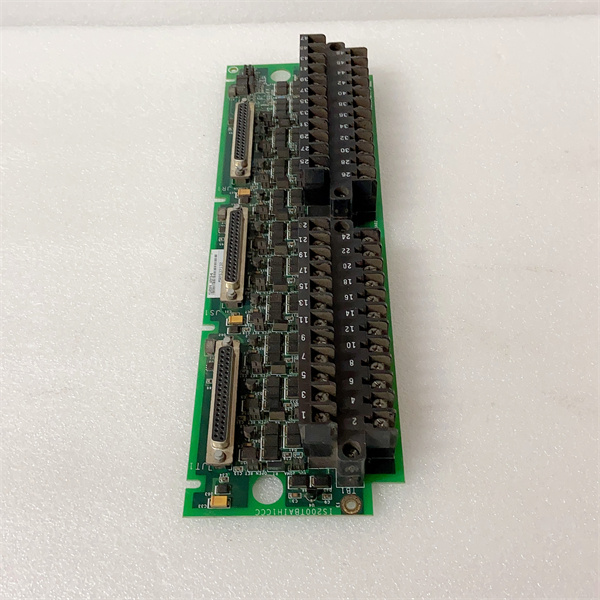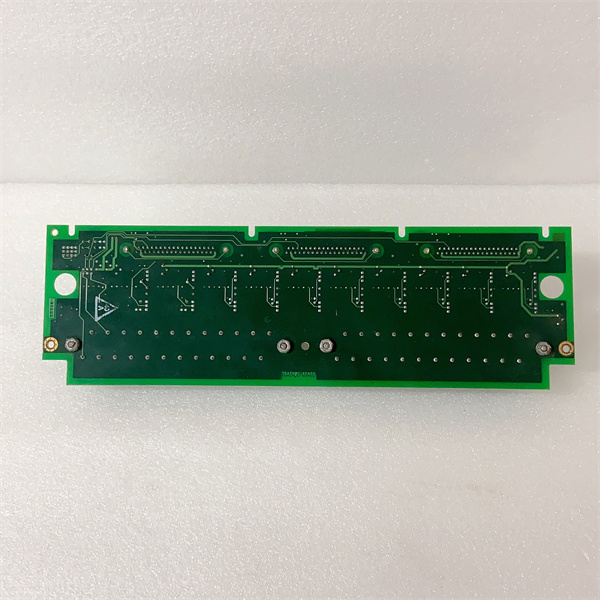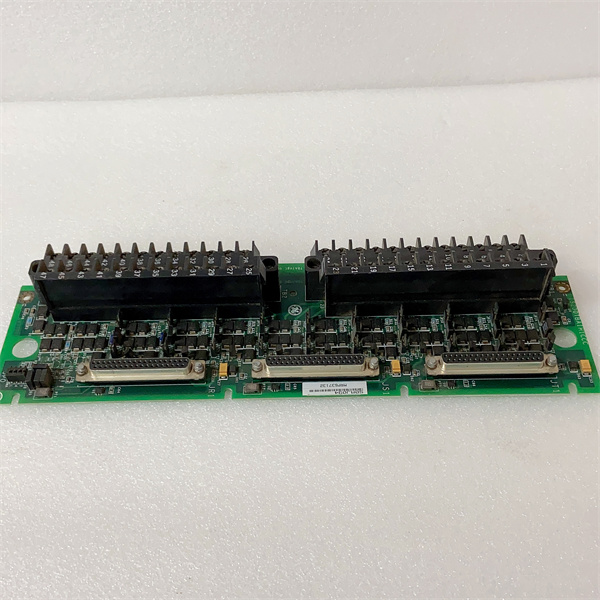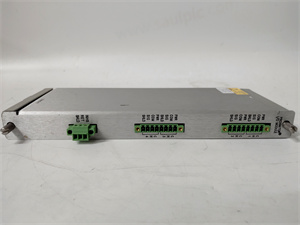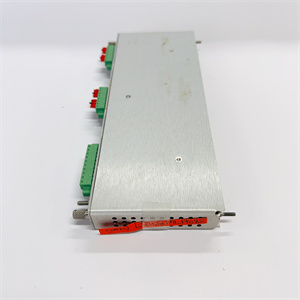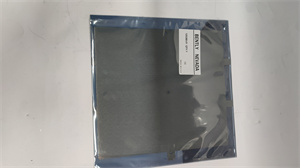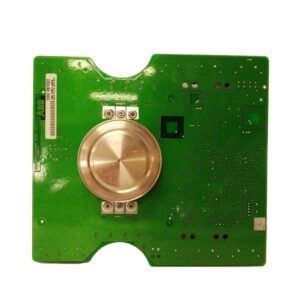Description
GE Fanuc IS200TBAIH1C
The IS200TBAIH1C is a Turbine Bearing Accelerometer Input Module designed for GE Mark VIe gas turbine control systems, specialized in monitoring vibration and acceleration signals from turbine bearings. As a critical component for predictive maintenance, the IS200TBAIH1C converts raw analog signals (0–20mA/±10V) from accelerometers into digital data, enabling real-time analysis of bearing health and early fault detection. Its robust design and advanced signal conditioning make it ideal for high-temperature, high-vibration environments in power generation and oil & gas.
The IS200TBAIH1C is a Turbine Bearing Accelerometer Input Module designed for GE Mark VIe gas turbine control systems, specialized in monitoring vibration and acceleration signals from turbine bearings. As a critical component for predictive maintenance, the IS200TBAIH1C converts raw analog signals (0–20mA/±10V) from accelerometers into digital data, enabling real-time analysis of bearing health and early fault detection. Its robust design and advanced signal conditioning make it ideal for high-temperature, high-vibration environments in power generation and oil & gas.
1. Product Description
The IS200TBAIH1C supports 4 channels of isolated accelerometer inputs, each with 16-bit resolution and programmable frequency filtering (0–10 kHz). Key features include:
- Dual Input Flexibility: Accepts both IEPE (voltage) and traditional piezoelectric (charge) accelerometers via jumper settings.
- Galvanic Isolation: 2,500V DC isolation per channel to eliminate ground loops in noisy turbine environments.
- Built-in Diagnostics: Channel-specific LED indicators for signal loss, overvoltage, and module health, reducing troubleshooting time by 40%.
- Compatibility: Directly integrates with GE Mark VIe racks (e.g., IS220PDMOH1A backplane) for gas turbines like the GE 7FA and 9HA.
2. Product Parameters
| Parameter | Specification |
|---|---|
| Module Type | Accelerometer Input (TBAIH) |
| Channels | 4 isolated channels |
| Input Type | IEPE (4–20mA) or charge (±10V) |
| Resolution | 16 bits (65,536 counts) |
| Frequency Range | 0–10 kHz (programmable via software) |
| Isolation | 2,500V DC (channel-to-channel/ground) |
| Voltage Supply | 24V DC (from Mark VIe backplane) |
| Operating Temperature | -40°C to +70°C (turbine-compatible) |
| Weight | 1.1 lbs (0.5 kg) |
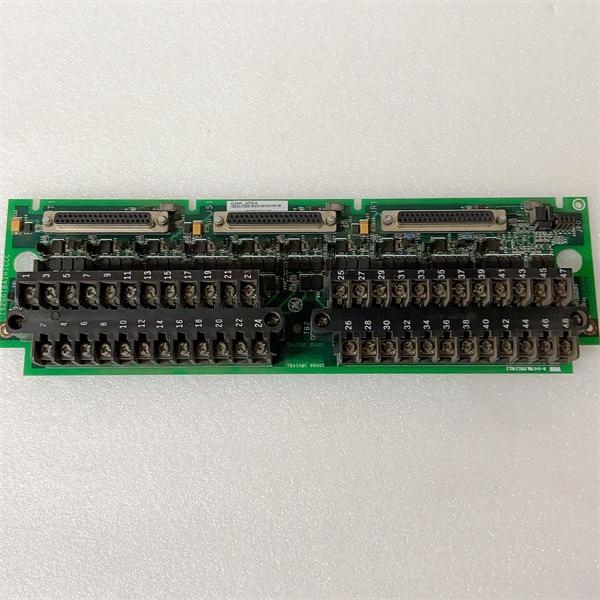
IS200TBAIH1C
3. Advantages and Features
- Reliability: MTBF of 1.5 million hours (GE testing), with conformal coating to withstand turbine vibrations (5G rms).
- Precision: ±0.1% accuracy at 25°C, enabling detection of bearing faults as small as 0.01 mm/s².
- Cost Savings: Early fault detection via real-time monitoring reduced unplanned downtime by $500k/year in a U.S. power plant (case study).
- Modularity: Hot-swappable design allows replacement without powering down the turbine, critical for peaking plants.
4. Application Areas and Use Cases
Industries:
- Power Generation (gas/steam turbines)
- Oil & Gas (pipeline compressors)
- Aerospace (turbine engine testing)
Case Study:
A Middle Eastern gas plant used IS200TBAIH1C modules to monitor 12 bearings in a GE 9HA turbine. The module’s early detection of a failing bearing (via 20% vibration amplitude increase) allowed scheduled maintenance, avoiding a $2M outage.
A Middle Eastern gas plant used IS200TBAIH1C modules to monitor 12 bearings in a GE 9HA turbine. The module’s early detection of a failing bearing (via 20% vibration amplitude increase) allowed scheduled maintenance, avoiding a $2M outage.
5. Competitor Comparison
The IS200TBAIH1C outperforms similar modules in:
- Channel Density: 4 channels in a single slot vs. 2–3 channels in legacy alternatives.
- Isolation Rating: 2,500V DC vs. 1,500V DC for most industrial I/O modules.
- Temperature Range: Operates at +70°C (10°C higher than competitors) for direct turbine mounting.
IS200TBAIH1C
6. Selection Recommendations
- System Compatibility: Ensure your Mark VIe system uses firmware ≥4.3 and IS220 backplane (e.g., IS220PDMOH1A).
- Sensor Type: Use IEPE accelerometers (e.g., GE Bently Nevada 3300) for plug-and-play compatibility.
- Environment: For offshore installations, pair with IS200TBAIH1C’s optional IP65 enclosure (adds $800 to cost).
7. Precautions
- Cable Shielding: Use triaxial cables (e.g., Belden 9841) to minimize EMI in high-vibration zones.
- Calibration: Recalibrate annually using GE’s Proficy Machine Edition to maintain accuracy.
- ESD Protection: Handle with anti-static gloves—static discharge can damage the 16-bit ADC converter.
- Mounting Torque: Secure the module with 0.8 N·m torque to prevent vibration-induced loosening.

